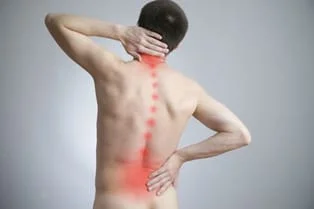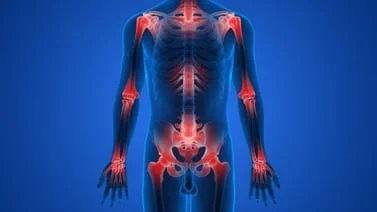In Extracorporeal Shock Wave Therapy, a cylindrical wave is generated underwater inside the headpiece. The wave is focused through the reflector and transmitted into the tissue. Focused Shock Wave produces a high pressure peak in a very short amount of time and is converted into biochemical energy in the cell and extracellular matrix. The physiological effects of Shock Wave on the tissue includes enhanced neo-vascularity, accelerated growth factor release, inhibition of molecules that have a role in inflammation, and stimulation of cellular processes that contribute to tissue healing and regeneration.
Physiological Effects
- Increased blood flow/Neovascularization
- Regulate inflammation/reboot the healing process in stalled, chronic conditions
- Tendon tissue regeneration, remodeling, Facilitate tendon gliding
- Fibrotic tissue and scar remodeling/ Resorption
- Stimulation of osteo-regenerative processes, influence osteoblast and osteoclast activity
- Influence transmission of pain signals/ Release of pain mediators
- Reduce hypertonia in spastic muscle
This shoulder MRI shows the amazing results after only (3) Focused Shock Wave & (5) Laser Therapy treatments
Before Treatment
- Labral tear
- Inflammation and pain present
- Bone disruption due to surgical implant

After Treatment
- Muscle and connective tissues healed
- Inflammation and pain improved
- Bone disruption from surgical implant healed

- Focused Shock Wave: uses high intensity sound waves to stimulate and speed up the healing mechanisms.
- Laser Therapy: uses focused light waves to decrease pain and inflammation in the cells which accelerates healing.


Chronic, stalled conditions are brought back into the acute phase to re-activate the body’s natural healing state. The energy delivered into the tissue by Shock Wave creates microscopic injuries: this controlled acute trauma stimulates the development of new blood vessels in the area.
Tendinitis, plantar facilities, carpal tunnel syndrome
Treatment Principles
- Dependent on-indication and tissue response
- 1-4 treatment sessions
- 5-10 days between sessions
- Recommended Laser therapy after the Shock Wave therapy and between sessions
What might happens after the Shock Wave therapy
- Redness of the skin, possible local discomfort, Bruising
- Swelling, reddening, hematomas – Petechiae – Pain. These side effects generally occur between 5 to 10 days.
Importance: Avoid physical activities 48 hours post treatment
Contraindication and Precautions
- Pregnancy
- Coagulation disorder
- Malignancy
- Thrombosis
- Corticosteroid injection (6 weeks)
- Over growth plate (not for under 18 years old)
- Over nerve roots and spinal cord
- Acute inflammation, lower and upper ankle
- History of rheumatic diseases
- History of hyperthyroidism
- Paget disease or calcaneal fat pad atrophy 6) Osteomyelitis (acute, sub-acute, chronic)
- Poly-neuralgia
- Infection in the area to be treated – Patient has a coagulation disorder or taking anti-coagulant medications
- Patient has a prosthetic device in the area to be treated – Over ischemic tissue in individuals with vascular disease effects (e.g. foot ulcers, venous stasis, etc.)
- Fracture of the Calcaneus
- Immunosuppressive therapy
- Long-term (≥ 6 months duration) treatment with any corticosteroid
- Insulin-dependent diabetes mellitus, severe cardiac or respiratory disease
- Bilateral painful heel, if both feet need medical treatment
- Previous surgery of the painful heel syndrome
- Previous unsuccessful treatment of the painful heel with a similar shockwave devices
- History of allergy or hypersensitivity to bupivacaine or local anesthetic sprays
- Significant abnormalities in hepatic function
- Poor physical condition
- History or documented evidence of peripheral neuropathy such as nerve entrapment, tarsal tunnel syndrome, etc.
- History or documented evidence of systemic inflammatory disease such as rheumatoid arthritis, osteoarthritis, ankylosing spondylitis, aseptic bone necrosis, Reiter‘s syndrome, etc.
- Implanted pacemakers, insulin pumps, defibrillators and/or neuro-stimulators
- Open wounds or skin rashes
- Tendon rupture, neurological or vascular insufficiencies of the painful heel, as assessed using the Semmes-Weinstein Monofilament test and the Ankle Brachial Index
